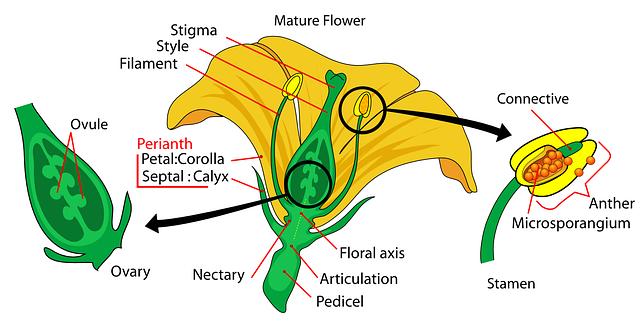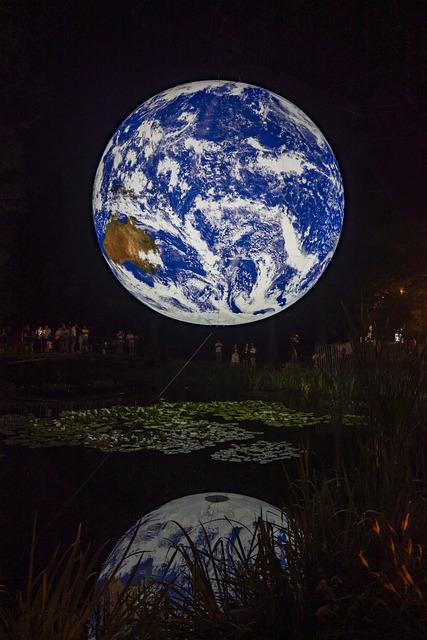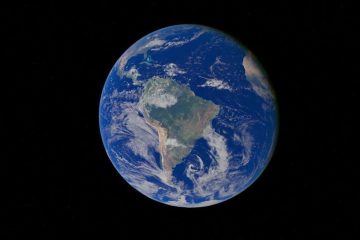Table of Contents
- Understanding the Fundamentals of Gaia Theory
- The Role of Diagrams in Visualizing Gaia Theory
- Analyzing Key Components in Gaia Diagrams
- Interpreting Gaia Diagrams: A Step-by-Step Guide
- Practical Applications of Gaia Theory in Modern Science
- Q&A
- Concluding Remarks
Understanding the Fundamentals of Gaia Theory
At the heart of the Gaia concept lies the idea that Earth’s biological and physical components form a complex, self-regulating system. This theory, proposed by James Lovelock and Lynn Margulis in the 1970s, suggests that Earth behaves like a single organism where living entities interact with their surroundings to maintain conditions suitable for life. In this model, the planet’s atmosphere, oceans, and land are not passive but work together through feedback loops to regulate temperature, chemical composition, and other vital parameters.
Key components of this theory include:
- Biosphere: All living organisms that inhabit Earth, influencing and interacting with their environment.
- Geosphere: The physical Earth, comprising rocks, minerals, and landforms, which interact with life forms in various ways.
- Hydrosphere: The water bodies on Earth, crucial for temperature regulation and the cycling of nutrients.
- Atmosphere: Composed of gases that are home to numerous weather patterns and chemical cycles, supporting life.
Lovelock’s theory is often visualized through a series of interconnected diagrams that demonstrate the intricate balance and interactions between these components. For instance, carbon dioxide levels can be adjusted naturally via the growth of plants and absorption by oceans, showcasing how living organisms and natural processes collaborate. Here’s a simple schema on Gaia theory interactions:
| Component | Function | Interaction |
|---|---|---|
| Biosphere | Carbon exchange | Photosynthesis and respiration |
| Geosphere | Mineral cycles | Weathering and nutrient release |
| Hydrosphere | Heat distribution | Ocean currents and evaporation |
| Atmosphere | Climate regulation | Gas exchange and weather patterns |

The Role of Diagrams in Visualizing Gaia Theory
- Interactivity: Utilizing interactive features can allow viewers to engage more deeply by clicking through different layers of ecological processes.
- Clarity: Simplified visuals with clear labels help in breaking down intricate feedback loops between organisms and their physical surroundings.
- Color Coding: Employing distinct colors to differentiate between the varied components like the atmosphere, hydrosphere, and lithosphere ensures easy comprehension.
| Component | Role |
|---|---|
| Atmosphere | Regulates climate through gas exchange |
| Biosphere | Contributes to nutrient cycles |
| Hydrosphere | Supports life through water distribution |

Analyzing Key Components in Gaia Diagrams
In the intricate tapestry of Gaia diagrams, several critical components interweave to provide insights into the interconnectedness of Earth’s systems. At the heart of these diagrams lies the balancing act of the biosphere, atmosphere, hydrosphere, and lithosphere. Each sphere represents a distinct layer of Earth’s body, working in concert to maintain a stable planetary environment. The diagrams visually encapsulate how energy flows and nutrients circulate through these spheres, emphasizing the interdependency that sustains life as we know it.
- Biosphere: This dynamic layer teems with life, from the smallest microbes to the largest mammals. It serves as the engine of Earth’s ecological systems, where photosynthesis and respiration occur.
- Atmosphere: Enveloping the Earth, this is the realm of gases that regulates climate and weather patterns. Its components filter solar radiation, influencing temperature and precipitation.
- Hydrosphere: All water bodies, including oceans, rivers, and glaciers, form this life-supporting network. It plays a key role in nutrient cycling and influences global climate dynamics.
- Lithosphere: The solid outer layer of Earth, where geological processes sculpt landscapes and geochemical cycles occur, contributing to Earth’s mineral resources.
| Component | Main Function | Interactions |
|---|---|---|
| Biosphere | Supports Life | Atmosphere, Hydrosphere |
| Atmosphere | Climate Regulation | Biosphere, Hydrosphere |
| Hydrosphere | Water Cycle | Atmosphere, Lithosphere |
| Lithosphere | Land Formation | Biosphere, Hydrosphere |
Understanding these components through Gaia diagrams empowers us to appreciate the delicate balance and intricate feedback loops essential for Earth’s homeostasis. Such comprehension not only enhances our scientific knowledge but also reinforces the urgency of sustainable practices to preserve these natural systems. By examining these interactions visually, Gaia diagrams serve as invaluable tools for both educators and environmentalists, bridging the gap between complex ecological theory and practical, impactful action.

Interpreting Gaia Diagrams: A Step-by-Step Guide
Delving into the visual representation of the Gaia theory can initially appear daunting, but with a methodical approach, it becomes much more manageable. Start by identifying the key components of the diagram, which often include the Earth’s atmosphere, hydrosphere, biosphere, and lithosphere. Each element typically interacts with the others through feedback loops, ensuring homeostasis within the planetary system. These diagrams illustrate the interconnectedness and balance maintained by various Earth components to support life, akin to organs within a living organism.
Next, observe the arrows and lines connecting different parts of the diagram. These often symbolize the flow of energy and matter, as well as causal relationships between the Earth’s systems. For instance, photosynthesis and respiration cycles may be depicted by arrows linking the atmosphere and biosphere, indicating carbon dioxide absorption and oxygen release. Understanding these flows is crucial, as they highlight how changes in one system can ripple through others, maintaining or disrupting planetary equilibrium.
pay attention to any annotations or labels on the diagram, which provide context and detail. They may include notes on ecological processes or specific environmental phenomena. Additionally, recognize that some diagrams might use colors to distinguish between different systems or processes. For example, blue may represent water-related processes, while green could indicate biological activities. Using these visual cues, you can further decipher the complex interactions depicted, leading to a richer understanding of how the Gaia hypothesis proposes the Earth as a self-regulating entity.

Practical Applications of Gaia Theory in Modern Science
In contemporary scientific endeavors, Gaia Theory serves as a profound inspiration, inviting researchers to perceive Earth as a complex, self-regulating organism. This holistic perspective encourages the integration of bio-geochemical cycles and feedback systems that maintain environmental stability. For example, climate scientists leverage the Gaia Theory framework to explore carbon cycles and their role in regulating atmospheric conditions. By understanding these interconnected processes, scientists can develop models that predict climate trends and inform environmental policy, fostering a more sustainable future.
Beyond climate science, the principles of Gaia Theory extend to ecology and biodiversity conservation. Researchers employ this theory to examine how diverse ecosystems contribute to the global balance and overall health of the planet. Key areas of application include:
- Ecosystem Services: Evaluating how different species interact and support systems such as pollination and nutrient cycling.
- Biodiversity Hotspots: Identifying critical areas that require protection to maintain Earth’s resilience.
- Restoration Ecology: Designing strategies to rehabilitate degraded landscapes and restore their ecological functions.
Modern technology also plays a pivotal role in advancing Gaia-inspired research. Innovations in remote sensing and data analytics allow scientists to monitor Earth’s systems with unprecedented detail. This integration of technology and Gaia Theory facilitates real-time analysis and enhances the ability to respond to ecological shifts. Consider the following technologies utilized in this field:
| Technology | Application |
|---|---|
| Satellite Imagery | Tracking deforestation trends globally. |
| IoT Sensors | Monitoring soil moisture and climate variation. |
| Data Analytics | Analyzing patterns in biodiversity distribution. |



0 Comments